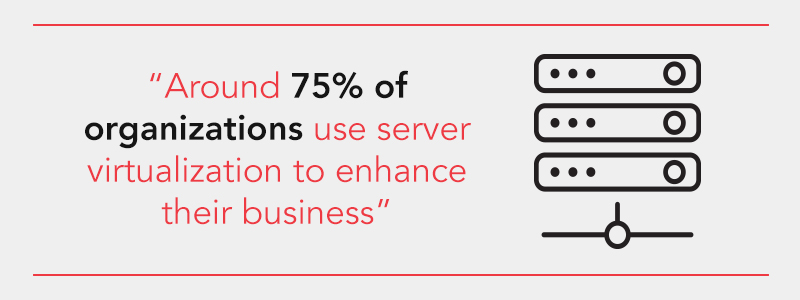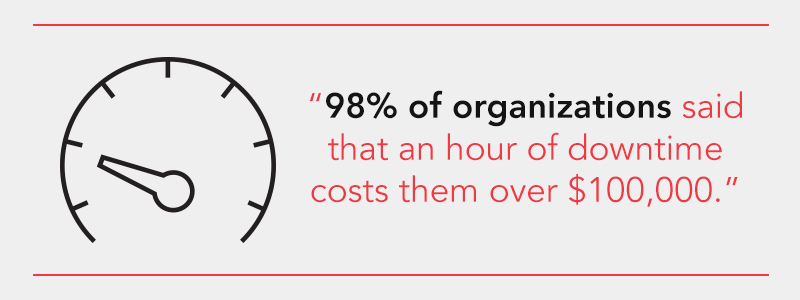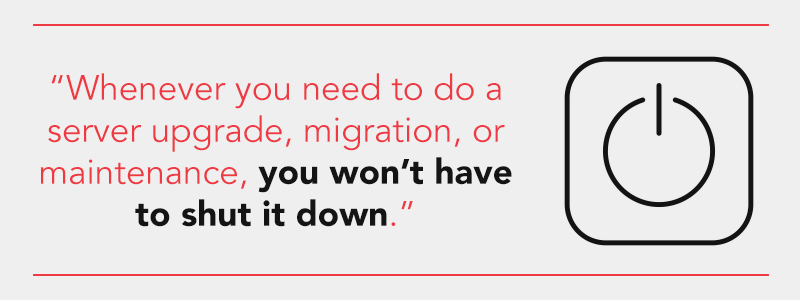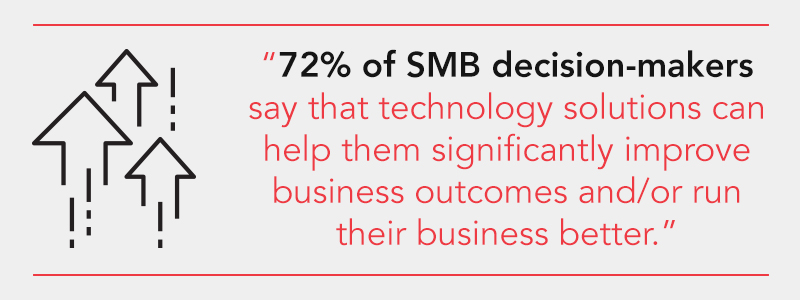How Virtualization Benefits Your Business
One of the least known and poorly understood information technology concepts that businesses stand to benefit from is virtualization. Many businesses could benefit from substantial cost savings and flexibility advantages from implementing a structured virtualization plan in their offices. In fact, 72% of SMB decision-makers say that technology solutions can help them significantly improve business outcomes and/or run their business better. But few actually realize how virtualization can help them grow their business.
Source: SMB Group
What is Virtualization?
Perhaps the biggest reason why many businesses haven’t fully realized the potential benefits of virtualization is that the concept itself isn’t well comprehended. Virtualization is the process of establishing the virtual something that appears to be real but isn’t—of something like a network, a server, a storage device, an operating system and the like. For SMBs users, the most familiar form of virtualization is probably the partitioning of a server. Around 75% of organizations use server virtualization to enhance their business. Using virtualization software to partition the server can create one or more virtual servers from a single device. Each of these virtual servers becomes its own distinct, separate server, that now shares the computing resources of the host unit. This concept can be extended to numerous other areas of information technology and deliver significant benefits for many businesses.

Source: TechGenix
Save Resources
Among the advantages conveyed by virtualization is the substantial cost savings the process offers in terms of hardware and software purchases. For instance, virtualization of servers allows multiple operating systems to be installed on a single server. For businesses that need applications designed to run—or that run optimally—under different operating systems, this can mean tremendous savings in hardware costs. It is possible, then for one hardware configuration to effectively serve as four or five different virtual configurations.
Similarly, it’s possible to virtualize networks and network resources. By dividing a single real network into several virtual networks, the network resources can be channeled, thereby optimizing performance and simplifying the structural complexity of the entity. Again, money can be saved by the avoidance of unnecessary duplication. Cost saving can also be realized from lower energy usage. Fewer real devices mean less energy is consumed to achieve a given task.
Eliminate Downtime
A recent survey found that 98% of organizations said that an hour of downtime costs them over $100,000. That’s a lot of money! Having a virtual server helps you eliminate known downtime.
Whenever you need to do a server upgrade, migration, or maintenance, you won’t have to shut it down. Instead, you can move your virtual server to a new host, do whatever you need to do, and then move it back without an interruption.
Additionally, when server failures do occur, backups can be spun up quickly on a second virtualized server. This is because virtual machines are essentially in the form of files or images, which can be copied and installed much more quickly than real devices. Thus, employees can keep working and you don’t have to worry about downtime costs.

Source: ITIC
Gain Scalability
Virtual servers can accommodate more with less space taken up. Thus, scalability is made much easier with a virtual server. It’s easy to provision a server for a team in your company or a virtual desktop for a new employee without going through the hassle of buying more hardware and finding physical space in your office to house it.
Plus, using a virtual server lets you only pay for what you use. For instance, if you are close to using up your 1TB storage allotment, you can easily upgrade based on your needs, so if you need 2TB of storage, you don’t have to purchase 12TB to get it.
Increase Efficiency
When you divide your physical server into several different virtual ones, you’re increasing efficiency. With virtualization, you can run multiple apps and operating systems on the same server, at the same time.

Plus, going virtual means that your team will spend less time hassling with hardware, performing maintenance, and fixing problems with physical servers when they arise. This means they can spend more time working on critical projects that help grow your business.
The Final Word on Virtualization
By understanding and implementing virtualization where appropriate, a business can realize substantial resource savings, easy scalability, and a significant reduction in IT-related problems.
If you’re interested in learning more about how your business can benefit from virtualization, reach out today. It’s our goal to help SMBs make IT choices that help them improve their workflow and grow.









